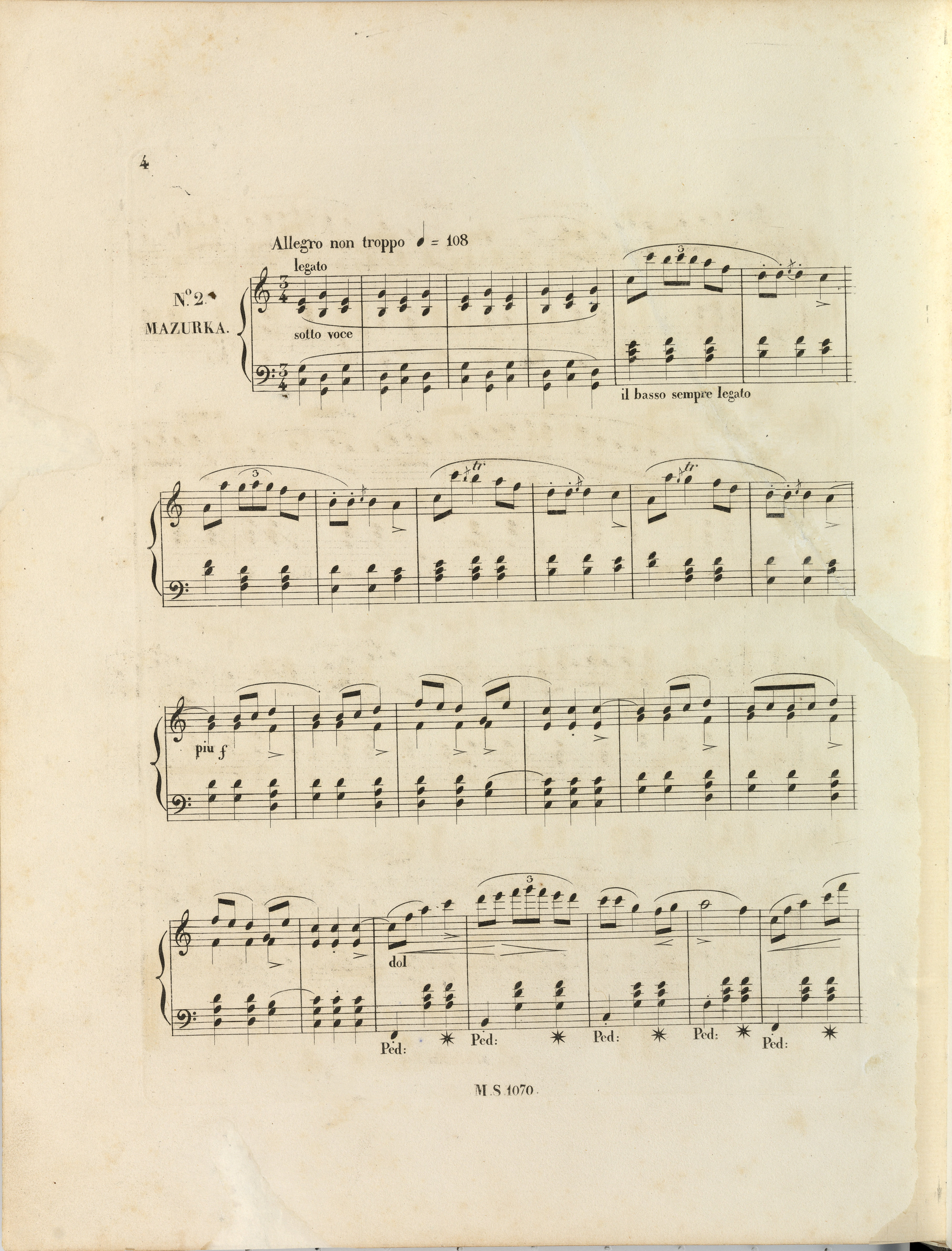



The comparison of all the twelve analogous places leads one to the conclusion that differences in staccato markings in A are accidental. Wedges appear in bars 12, 44, 90, 94 and 96, most probably also in bar 6, while the dot only appears once - in bar 92. In the remaining five instances (bars 8, 10, 38, 40 and 42) staccato signs are missing altogether. Explaining that situation with possible subtle nuances between particular motifs or phrases – for instance, in bars 37-44 the wedge appears only at the end of that section - seems far-fetched considering the visible haste with which A was written down. There is no correlation either between staccato signs and slur lengths (cf. bar 6). Taking all this into consideration, we make the notation of that detail uniform in all the above-listed bars .A similar solution was adopted in GE2 (→GE3), yet with dots used in all those places instead of wedges.
Compare the passage in the sources »
category imprint: Interpretations within context; Differences between sources
notation: Articulation, Accents, Hairpins




